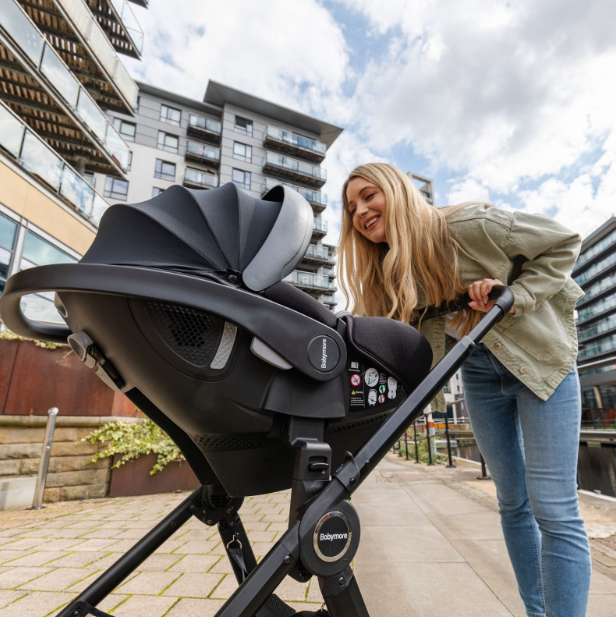Once your baby is ready to explore the world, a pushchair becomes one of the most essential pieces of kit you will own. It’s your ticket to freedom, allowing you to navigate everything from city pavements and park paths to the weekly supermarket run. But the sheer number of options on the market can be overwhelming for new parents. To help you find the perfect set of wheels for your family, we’ve sifted through the latest models to bring you our practical picks for every parent.
From ultra-compact city strollers to robust all-terrain models, the best pushchairs of the year focus on solving real-world problems. Whether you need a lightweight frame for public transport or a huge shopping basket for your daily errands, there is a model out there for you. Brands like Babymore continue to innovate, offering stylish and functional designs that cater to the diverse needs of UK families, proving that practicality and design can go hand-in-hand. This guide will break down the key features to look for and help you choose a pushchair that you’ll love using every single day.
1. Understanding the Lingo: Pram vs. Pushchair vs. Travel System
The first point of confusion for many parents is the terminology. A pram typically refers to a lie-flat bassinet (or carrycot) designed for newborns. A pushchair (also called a buggy or stroller) has a seated unit for older babies who have head control (usually from around 6 months). A travel system is the ultimate all-in-one solution, typically comprising a single pushchair frame that can be used with a carrycot, a toddler seat, and a compatible infant car seat, offering maximum versatility from birth.
2. Lie-Flat vs. Reclining Seat: Why It Matters for Newborns
For the first six months, it is crucial for your baby’s spinal development that they lie completely flat when sleeping for extended periods. This is why a pushchair with a lie-flat recline or a separate carrycot is essential for newborns. Many of the top pushchairs this year offer a seat that reclines to a fully flat position, making them suitable from birth without the need for a bulky carrycot, which is a great space-saving feature.
3. Parent-Facing vs. World-Facing: The Best of Both Worlds
In the early months, having your baby face you is wonderful for bonding, reassurance, and communication. As they grow more curious, they will love facing forward to see the world around them. The best and most practical pushchairs on the market today come with a reversible seat unit, allowing you to switch between parent-facing and world-facing modes in a few simple clicks, giving you the flexibility to adapt to your child’s developmental stage.
4. Wheels and Suspension: The Key to a Smooth Ride
The type of wheels your pushchair has will dramatically affect its performance. For smooth city pavements and shopping centres, smaller, swivel wheels offer fantastic manoeuvrability. However, if your daily routine involves countryside walks, cobblestones, or bumpy park paths, you will need a pushchair with larger, more robust wheels and good suspension to absorb the bumps and ensure a comfortable, smooth ride for your little one.
5. The Fold: Is a One-Hand Fold Really Necessary?
The folding mechanism is a feature you will use every single day, so it needs to be easy. A one-hand fold is a game-changing feature for any parent who has ever tried to collapse a pushchair while holding a baby. The top models of the year have focused on creating intuitive, quick, and compact folds that make getting the pushchair in and out of the car boot or onto public transport a genuinely stress-free experience.
6. Size and Weight: A Crucial Factor for City Living
If you live in a city, frequently use public transport, or have limited storage space at home, a lightweight and compact pushchair is a must. Many of the best-selling models are now designed to be “ultra-compact,” folding down small enough to fit into an overhead locker on an aeroplane. While these are fantastic for travel, be sure to balance a small size with sturdiness, ensuring it still feels robust enough for daily use.
7. The Shopping Basket: A Parent’s Best Friend
Never underestimate the importance of a large, easily accessible shopping basket. It will become your mobile storage unit for everything from nappies and snacks to your weekly grocery shop. When testing a pushchair, look for a basket that is not only spacious but also easy to get to, even when the seat is fully reclined. A generous basket is a simple feature that makes a huge difference in daily convenience.
8. An Adjustable Handlebar: Comfort for Every Parent
If you and your partner are different heights, an adjustable handlebar is a non-negotiable feature. Being able to set the handlebar to a comfortable height for you prevents backache and makes the pushchair much more pleasant to steer. It’s a small detail that provides a significant ergonomic benefit for the person doing the pushing.
9. Weather Protection: Sun Canopy and Rain Cover
The unpredictable UK weather means good protection is essential. The best pushchairs come with a large, extendable UPF 50+ sun canopy to shield your baby from harmful rays and create a dark, cozy environment for naps. A custom-fit rain cover that is easy to throw on during a sudden downpour is also a must-have accessory that should ideally be included with your purchase.
10. Car Seat Compatibility: Building Your Travel System
If you are a driver, creating a travel system by pairing your pushchair with an infant car seat offers incredible convenience. It allows you to move your sleeping baby from the car to the pushchair frame without waking them. Most major pushchair brands are compatible with leading car seat brands like Maxi-Cosi and Cybex, often with the use of simple adaptors, giving you the flexibility to choose the safest car seat for your needs.
11. Longevity and Value: Will It Last?
When investing in a pushchair, you want one that will last. Look for a sturdy frame, high-quality, durable fabrics, and a high weight limit on the seat to ensure it can accommodate your child as they grow. A well-made pushchair from a reputable brand can comfortably last for your first child and even be passed down, making it a sustainable and valuable long-term investment.


